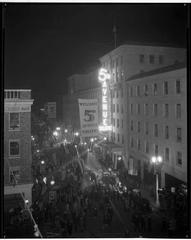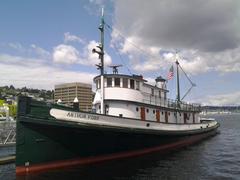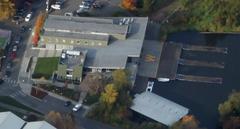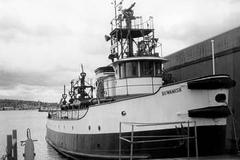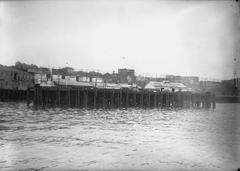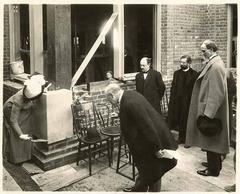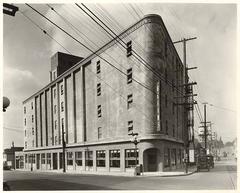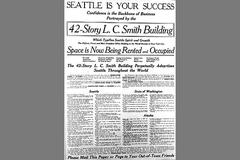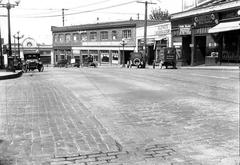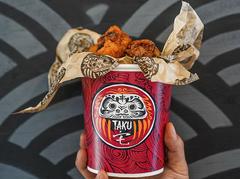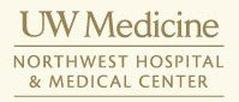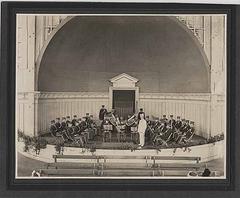Sick’s Stadium Seattle: Visiting Hours, Tickets, and Historical Significance
Date: 03/07/2025
Introduction
Nestled in Seattle’s Rainier Valley, Sick’s Stadium holds a special place in the city’s rich baseball and cultural history. Though demolished in 1979, the site remains a touchstone for Seattle’s sporting legacy, most notably as the home of the Pacific Coast League’s Seattle Rainiers and the one-season Major League Baseball (MLB) team, the Seattle Pilots. Built in 1938 by Emil Sick, the stadium succeeded Dugdale Park and quickly became a local gathering place for sports and community events. Today, thoughtful commemorative markers and displays at the site—now home to a Lowe’s Home Improvement store—ensure that Sick’s Stadium’s memory and impact remain accessible to fans, historians, and visitors.
This comprehensive guide details Sick’s Stadium’s historical significance, key moments, and practical information about visiting the site today. Whether you’re a baseball enthusiast, a history buff, or a curious traveler, this resource will help you connect with Seattle’s sporting past and discover ways to experience its legacy firsthand. (Project Ballpark; HistoryLink; The Clio)
Table of Contents
- Origins and Construction
- Role in Minor League Baseball
- Transition to Major League Baseball
- Notable Events and Cultural Significance
- Decline and Demolition
- Visiting Information
- Frequently Asked Questions (FAQ)
- Legacy and Place in Seattle’s Identity
- Summary and Visitor Recommendations
- Sources and Further Reading
Origins and Construction
Sick’s Stadium was built in 1938 after Dugdale Park was destroyed by fire in 1932. Emil Sick, owner of the Rainier Brewing Company and the Seattle Rainiers, invested $350,000 to construct a modern steel-and-concrete ballpark, initially seating 12,000 fans with future expansion in mind. The stadium opened on June 15, 1938, quickly becoming a premier minor league venue. Its intimate design and community-focused location fostered a unique and energetic fan experience. (Project Ballpark; Ballparks of Baseball)
Role in Minor League Baseball
For decades, Sick’s Stadium was home to the Seattle Rainiers, a Pacific Coast League (PCL) powerhouse especially during the 1940s and 1950s. Under Emil Sick’s leadership, the Rainiers captured five PCL titles, drawing large crowds and cultivating a passionate fan base. The stadium’s single-tiered design kept fans close to the action, while its location in a residential neighborhood encouraged local support despite limited parking and some logistical challenges. (Baseball Biography; allsportshistory.com)
Transition to Major League Baseball
Seattle’s MLB ambitions peaked in the 1960s. In 1967, the city was awarded an MLB expansion franchise—conditional on building a new domed stadium. Construction delays meant the Seattle Pilots played their only season in 1969 at Sick’s Stadium, which underwent rushed renovations to increase capacity to nearly 30,000. Only 17,000 seats were ready on Opening Day, and the stadium faced issues such as obstructed views, inadequate plumbing, and insufficient facilities. The Pilots’ struggles at Sick’s Stadium were famously chronicled in Jim Bouton’s book “Ball Four,” which captured the unique atmosphere and challenges of Seattle’s brief foray into the majors. (Project Ballpark; Ballparks of Baseball)
Notable Events and Cultural Significance
Sick’s Stadium was more than a ballpark. It hosted concerts, boxing matches, political rallies, and community gatherings, integrating itself into Seattle’s civic life. The stadium’s role in the 1969 MLB season—though short-lived—remains a defining moment in Seattle sports history. The commemorative plaque at the site reads: “You are standing on the site of Sick’s Stadium. If the year were 1942, you’d be in perfect position to knock one out of the park.” (City Arts Magazine; Baseball Biography)
Decline and Demolition
After the Pilots’ bankruptcy and relocation to Milwaukee (where they became the Brewers) in 1970, Sick’s Stadium returned to minor league use before closing in 1976. The stadium was demolished in 1979, and the site later hosted an electronics plant and Eagle Hardware before becoming a Lowe’s Home Improvement store in 1999. Each redevelopment phase has incorporated tributes to the stadium’s legacy. (HistoryLink; Seattle Pilots Fan Site)
Visiting Information
Can You Visit Sick’s Stadium Today?
While the original stadium is gone, visitors can explore the site at 2700 Rainier Avenue South, Seattle, WA 98144. The Lowe’s store occupying the site features several commemorative markers:
- Historical signage at the Rainier and McClellan intersection.
- Replica home plate and base markers inside the store.
- Pitcher’s mound marker near the registers.
- Memorabilia display case near customer service, showcasing Rainiers, Pilots, and Angels artifacts.
Visiting Hours and Access
- Hours: The site follows Lowe’s business hours, typically 6:00 AM – 9:00 PM Monday–Saturday, 7:00 AM – 8:00 PM Sunday. Confirm current hours via Lowe’s website or by phone.
- Admission: Free; no tickets required.
- Accessibility: Fully accessible, including parking, entrances, and restrooms.
Getting There
- Public Transit: Served by King County Metro bus routes; Link Light Rail to Rainier Beach station plus a short bus ride or walk.
- Parking: Ample free parking in the Lowe’s lot.
- On Foot: The surrounding neighborhood is pedestrian-friendly, though some hilly terrain is present. (Totally Seattle)
Nearby Attractions
- Museum of History & Industry (MOHAI): Features exhibits on Seattle’s sports legacy. (MOHAI)
- T-Mobile Park: Current home of the Mariners, with exhibits on Seattle baseball history. (Ballpark Ratings)
- Rainier Valley Neighborhood: Offers diverse dining, shopping, and local parks. (Roam the Northwest)
Frequently Asked Questions (FAQ)
Q: What are Sick’s Stadium visiting hours?
A: Visiting hours align with Lowe’s store hours: typically 6:00 AM – 9:00 PM daily. Check Lowe’s official site for current hours.
Q: Does it cost anything to visit?
A: No. There is no entry fee.
Q: Are guided tours available?
A: No official tours are offered, but you may enjoy a self-guided visit using on-site markers and displays.
Q: Is the site accessible for people with disabilities?
A: Yes, all commemorative features and facilities are accessible.
Q: What can I see at the site?
A: Historical signage, base and home plate markers, a pitcher’s mound marker, and a memorabilia display case.
Q: Can I take photographs?
A: Yes, photography is permitted inside Lowe’s, but be courteous to customers and staff.
Q: How do I get there by public transit?
A: King County Metro bus lines and Link Light Rail serve the area; check schedules for routes to Rainier Avenue South.
Legacy and Place in Seattle’s Identity
Sick’s Stadium remains a powerful symbol of Seattle’s sporting ambitions and community spirit. Its memory is preserved not just in baseball lore but also in the physical commemorative features at the site. The stadium’s story, from its status as a state-of-the-art minor league park to its challenging role as a temporary MLB venue, mirrors Seattle’s growth and resilience. Today, the site’s integration into a modern retail space ensures that the legacy of Sick’s Stadium remains visible and honored for future generations. (Ballparks of Baseball; HistoryLink; The Clio)
Summary and Visitor Recommendations
Sick’s Stadium stands as a testament to Seattle’s early baseball dreams and the enduring spirit of its fans. Visiting the site today offers a meaningful connection to the city’s past, complete with thoughtfully placed markers and memorabilia. With easy access via public transit, free parking, and year-round availability, the Sick’s Stadium site is an accessible destination for anyone interested in Seattle’s sporting and cultural heritage. For deeper exploration, consider visiting MOHAI, T-Mobile Park, or local digital archives.
- Best time to visit: July–September for optimal weather (Travel Lemming)
- Tips: Engage with the historical markers, take photographs, and explore the Rainier Valley neighborhood for a richer experience.
Stay informed about Seattle’s historical sites and events by downloading the Audiala app and following local blogs and social media.
Sources and Further Reading
- Project Ballpark: Sick’s Stadium History
- All Sports History: The Rise and Fall of the Seattle Rainiers
- The Clio: Sick’s Stadium Entry
- HistoryLink: Sick’s Stadium
- Seattle Pilots Fan Site
- Museum of History and Industry (MOHAI)
- Ballparks of Baseball: Sick’s Stadium
- Baseball Biography: Sick’s Stadium
- Totally Seattle: Getting Around
- Postcards to Seattle: Exploring Without a Car
- Roam the Northwest: Local Experiences
- Ballpark Ratings: T-Mobile Park Must-Sees
- Travel Lemming: Seattle Travel Tips
- Seattle Public Library Digital Collections
- 610 KONA: Sick’s Stadium
